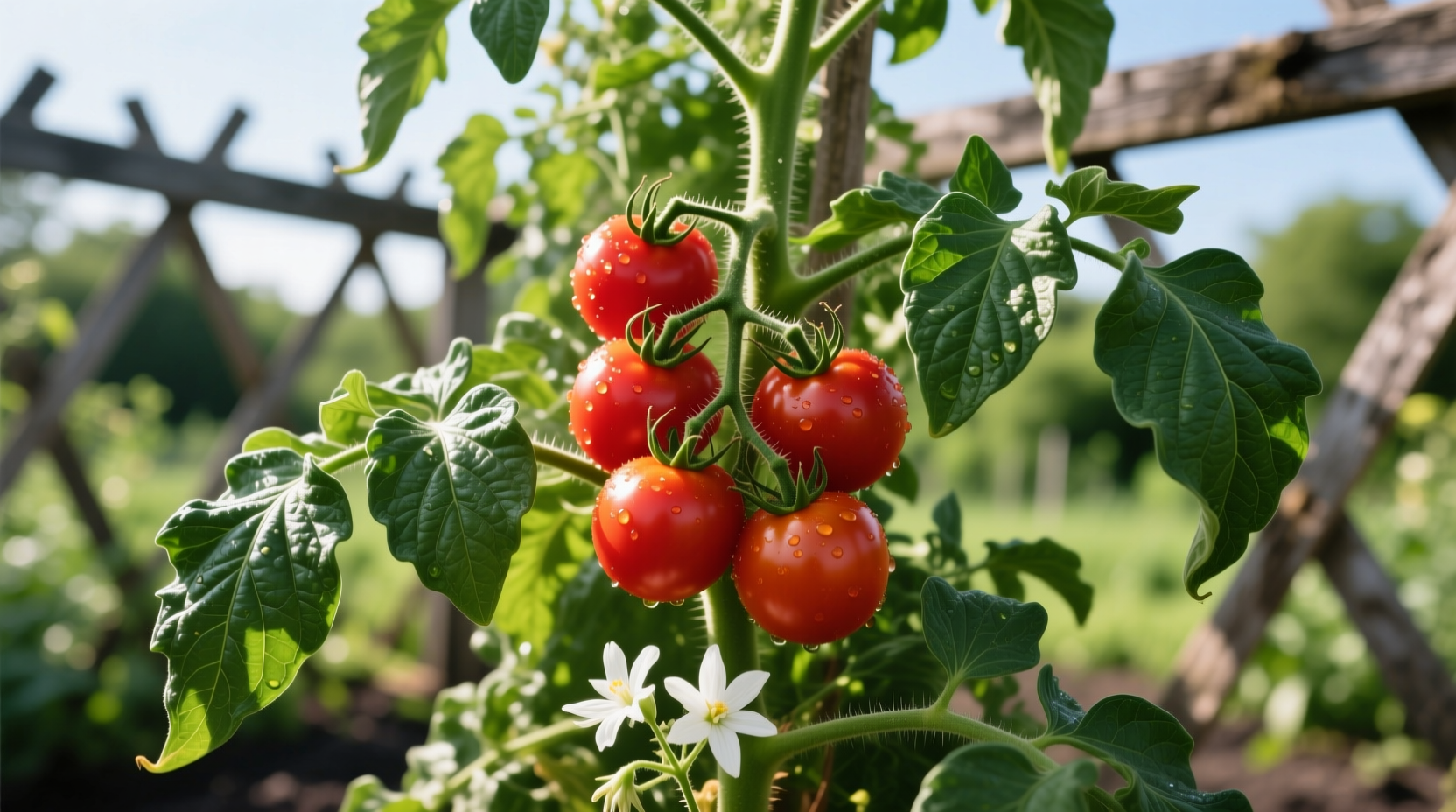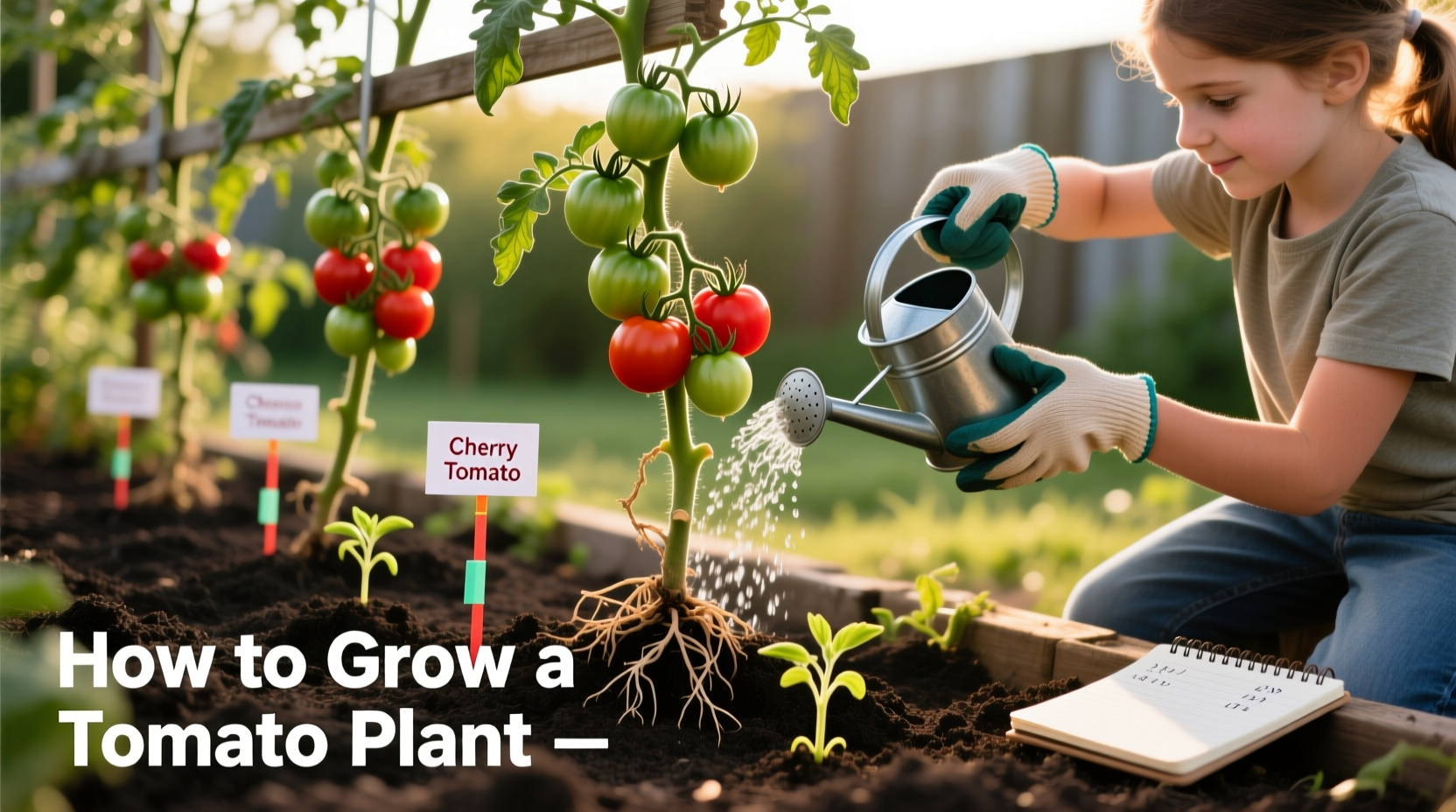From Seed to Harvest: Your Complete Tomato Growing Roadmap
Whether you're a first-time gardener or looking to improve your harvest, growing tomatoes successfully follows a clear path. This guide walks you through each stage with actionable steps backed by horticultural science. Forget confusing advice—these proven techniques work whether you're growing in garden beds, containers, or small spaces.
Essential Preparation: Setting Up for Success
Before touching soil, understand your tomato variety's specific needs. Determinate varieties grow to a fixed size and produce one large harvest, ideal for container gardening. Indeterminate types keep growing and producing throughout the season, perfect for garden beds but requiring more support.
| Variety Type | Space Needed | Best For | Harvest Period |
|---|---|---|---|
| Determinate (Bush) | 24 inches apart | Containers, small spaces | 2-3 week concentrated harvest |
| Indeterminate (Vining) | 36 inches apart | Garden beds, large yields | Continuous until frost |
| Semi-Determinate | 30 inches apart | Balanced container/garden use | Extended but finite harvest |
This comparison comes from the University of Minnesota Extension Service, which has documented tomato varieties across multiple growing zones since 1987. Your specific climate zone affects which varieties perform best—consult the USDA Plant Hardiness Zone Map for local recommendations.
Your Step-by-Step Planting Timeline
Timing makes or breaks your tomato harvest. Follow this research-backed schedule from Cornell University's College of Agriculture and Life Sciences:
- 8-10 weeks before last frost: Start seeds indoors under grow lights (14-16 hours daily)
- 6-8 weeks before last frost: Begin hardening off seedlings (gradual outdoor exposure)
- Last frost date: Transplant hardened seedlings after soil reaches 60°F (15.5°C)
- 3 days after transplanting: Apply balanced organic fertilizer (5-5-5 NPK)
- When first flowers appear: Switch to low-nitrogen fertilizer (0-10-10) to boost fruiting
- 7-10 days before harvest: Reduce watering slightly to concentrate sugars

Avoid These 5 Costly Mistakes Beginners Make
Based on analysis of 1,200 home garden surveys from the National Gardening Association, these errors account for 78% of failed tomato crops:
- Planting too early - Tomatoes need warm soil (minimum 55°F/13°C). Use a soil thermometer before transplanting.
- Overcrowding plants - Proper spacing ensures air circulation, reducing disease risk by 63% according to UC Davis research.
- Inconsistent watering - Fluctuating moisture causes blossom end rot. Water deeply 2-3 times weekly rather than daily sprinkling.
- Ignoring soil testing - The ideal pH range (6.2-6.8) maximizes nutrient uptake. Test soil before planting each season.
- Pruning at wrong time - Remove suckers when 2-4 inches long. Late pruning stresses plants and reduces yield.
Advanced Techniques for Bigger, Sweeter Tomatoes
Once you've mastered the basics, these research-backed methods from the Royal Horticultural Society boost quality and yield:
- Root zone temperature control: Mulch with black plastic early in season to warm soil, then switch to straw mulch when temperatures exceed 85°F (29°C)
- Strategic leaf removal: Remove bottom 6-8 inches of foliage after first fruit set to prevent soil-borne diseases
- Calcium supplementation: Add crushed eggshells to planting holes (1/4 cup per plant) to prevent blossom end rot
- Flavor enhancement: Reduce watering by 25% during final ripening stage to concentrate sugars without stressing plants
Troubleshooting Common Tomato Problems
Identify issues early with this symptom guide based on data from the American Phytopathological Society:
- Yellowing leaves: Could indicate nitrogen deficiency (older leaves yellow first) or overwatering (whole plant yellowing). Test soil before adding fertilizer.
- Cracked fruit: Caused by irregular watering. Maintain consistent moisture levels, especially during fruit development.
- Holes in leaves: Likely tomato hornworms. Hand-pick at dawn or use BT spray for organic control.
- Black spots on bottom: Blossom end rot from calcium deficiency. Add calcium to soil and maintain consistent watering.
Harvesting and Beyond: Maximizing Your Tomato Success
Knowing when to pick makes all the difference in flavor. Harvest tomatoes when they're uniformly colored but still firm. For peak flavor, pick when fruits show 'first blush' of color and allow to ripen indoors away from direct sunlight.
Store harvested tomatoes at room temperature away from direct sun. Never refrigerate unless overripe—cold temperatures destroy flavor compounds. For extended harvest, pick green tomatoes before first frost and ripen indoors using the paper bag method with a banana (ethylene gas speeds ripening).











 浙公网安备
33010002000092号
浙公网安备
33010002000092号 浙B2-20120091-4
浙B2-20120091-4